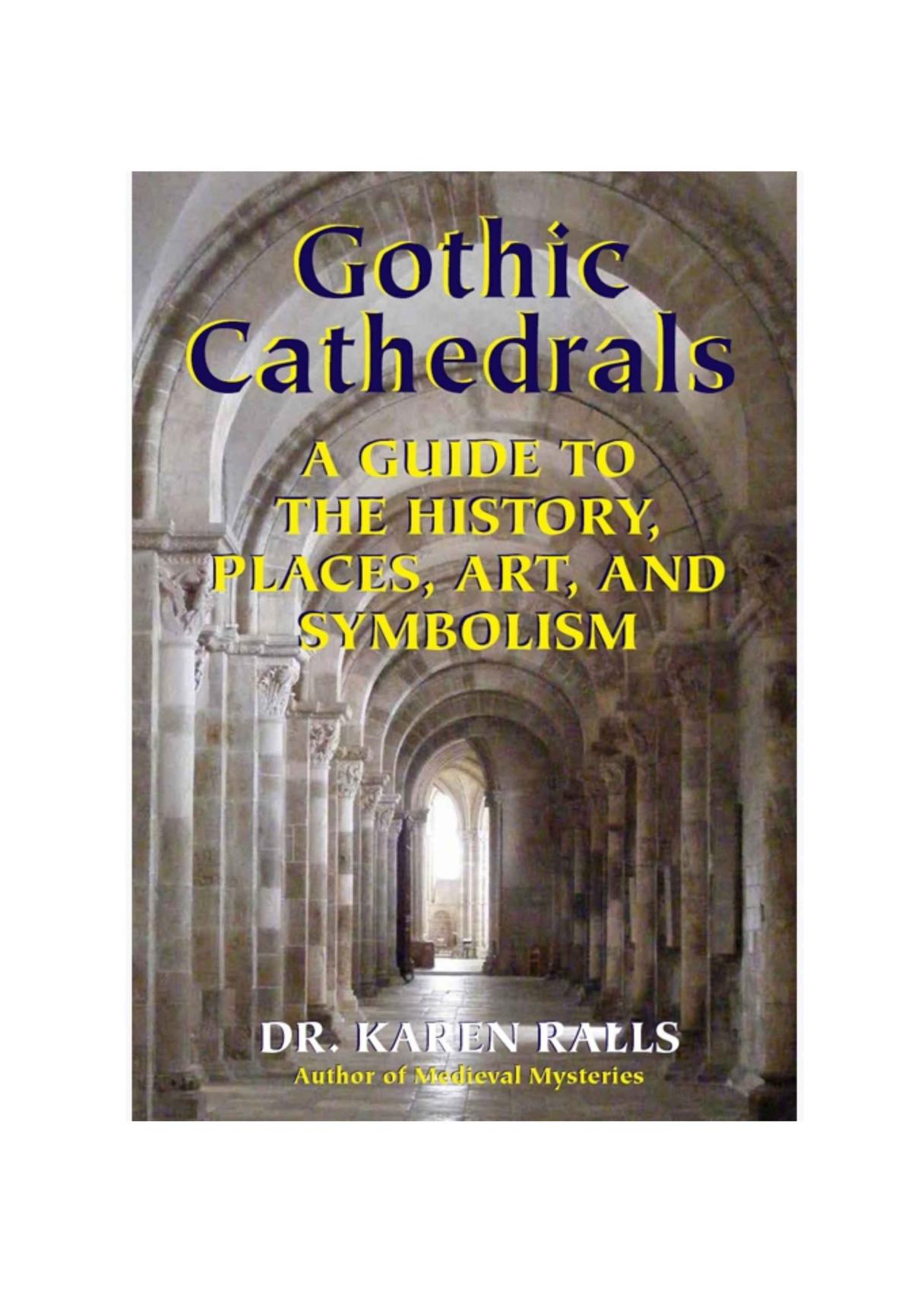Gothic Cathedrals by Karen Ralls

Author:Karen Ralls
Language: eng
Format: epub, pdf
ISBN: 9780892546275
Publisher: Ibis Press
Sundial angel, the “Angel of Chartres,” carved on the exterior of Chartres cathedral.
The idea that there are secrets concealed in art and architecture is not a new one. Certain types of carvings do tend to show up quite often in Gothic cathedrals—in fact, far more often than in other types of medieval buildings—as architectural historians have noted. Some of these Gothic carvings are quite unusual, featuring gargoyles, unicorns, or the Green Man, for example.
From the early twelfth century, a feeling that this was an age of change accompanied the new Gothic style. In sculpture, painting, book illumination, and the goldsmith's art, new styles emerged, contrastingly greatly with what had gone before. (2)
Cathedrals housed elaborately carved stone shrines for relics, tombs of saints, or general purposes. At times, the stampedes to see these works of art would become so great, that official shrine-keepers were employed, like security guards today. These security gatekeepers were officials called feretrars—such as those needed at Durham, Westminster Abbey, Ely, Chartres, and Christ Church Canterbury to protect visitors from injuring themselves or others. (3)
We discussed sacred spaces and energy vortices earlier. Currents of sacred force were highly regarded by some pilgrims in medieval times, but venerating a saints' relics was key. When a pilgrim would visit a shrine:
the belief was that the farther one stood from the object, the weaker was the effect. Thus, a person who hoped for a miracle cure needed to have direct or near-direct physical contact with the relic. Because of this tendency to radiate, if a sacred object is left unconfined and exposed, its powers will dissipate...[so]..for this reason, care must be taken to construct a strong container to house it that is made of materials that can “hold” the sacred force. (4)
In the Middle Ages, carvings of Night (Moon) and Day (Sun) are well-established, and commonly seen in various forms in many Gothic cathedrals. For instance, in one of the archivaults at Chartres, the carved figure of Night is illustrated as a blind person led by Day holding her hand. Other carved images of blindfolded females in medieval buildings include the Wheel of Fortune, Prudence, Sapientia (Wisdom), the ladder of Philosophy (as Lady Alchemy), Blind Cupid, and Blindfolded Death. (5)
During the Reformation, a taboo against the visual arts was adopted by some of the more austere forms of Protestantism. Their places of worship were devoid of art—a simple, stark environment. But the medieval cathedrals were the opposite. The late twelfth and thirteenth centuries reveled in sacred geometry, in architecture, structural adornment, and visual art—including sculptures, paintings, and ornately carved misericords and tombs.
The rise of the cathedral school of Chartres and its evolution into the University of Paris, caused an overall shift in emphasis to a deeper study of ancient philosophy. Some of the prominent scholars in Paris, such as William of Conches and Bernard Silvestris (later to become Pope Sylvester), helped spearhead this effort. Geometry, music, and certain themes from earlier classical Pagan literature and philosophy experienced a revival among scholars, who read and studied Plato, Aristotle, the Stoics, and other Greek philosophers.
Download
This site does not store any files on its server. We only index and link to content provided by other sites. Please contact the content providers to delete copyright contents if any and email us, we'll remove relevant links or contents immediately.
| Landmarks & Monuments | Religious Buildings |
| Residential |
Kathy Andrews Collection by Kathy Andrews(10559)
The remains of the day by Kazuo Ishiguro(7577)
Spare by Prince Harry The Duke of Sussex(4227)
Paper Towns by Green John(4179)
The Body: A Guide for Occupants by Bill Bryson(3823)
Be in a Treehouse by Pete Nelson(3236)
Harry Potter and the Goblet Of Fire by J.K. Rowling(3087)
Goodbye Paradise(2983)
Never by Ken Follett(2912)
Into Thin Air by Jon Krakauer(2713)
The Remains of the Day by Kazuo Ishiguro(2629)
The Genius of Japanese Carpentry by Azby Brown(2618)
The Cellar by Natasha Preston(2606)
Drawing Shortcuts: Developing Quick Drawing Skills Using Today's Technology by Leggitt Jim(2537)
120 Days of Sodom by Marquis de Sade(2447)
Architecture 101 by Nicole Bridge(2358)
Machine Learning at Scale with H2O by Gregory Keys | David Whiting(2322)
The Man Who Died Twice by Richard Osman(2312)
Industrial Automation from Scratch: A hands-on guide to using sensors, actuators, PLCs, HMIs, and SCADA to automate industrial processes by Olushola Akande(2152)
